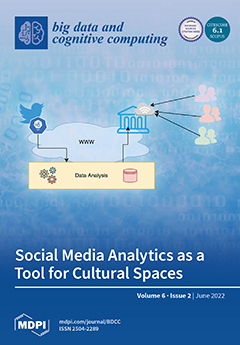Policymakers, practitioners, and researchers around the globe have been acting in a coordinated manner, yet remaining independent, to achieve the seventeen Sustainable Development Goals (SDGs) defined by the United Nations. Remarkably, SDG-centric activities have manifested a huge information silo known as big data.
[...] Read more.
Policymakers, practitioners, and researchers around the globe have been acting in a coordinated manner, yet remaining independent, to achieve the seventeen Sustainable Development Goals (SDGs) defined by the United Nations. Remarkably, SDG-centric activities have manifested a huge information silo known as big data. In most cases, a relevant subset of big data is visualized using several two-dimensional plots. These plots are then used to decide a course of action for achieving the relevant SDGs, and the whole process remains rather informal. Consequently, the question of how to make a formal decision using big data-generated two-dimensional plots is a critical one. This article fills this gap by presenting a novel decision-making approach (method and tool). The approach formally makes decisions where the decision-relevant information is two-dimensional plots rather than numerical data. The efficacy of the proposed approach is demonstrated by conducting two case studies relevant to SDG 12 (responsible consumption and production). The first case study confirms whether or not the proposed decision-making approach produces reliable results. In this case study, datasets of wooden and polymeric materials regarding two eco-indicators (CO
2 footprint and water usage) are represented using two two-dimensional plots. The plots show that wooden and polymeric materials are indifferent in water usage, whereas wooden materials are better than polymeric materials in terms of CO
2 footprint. The proposed decision-making approach correctly captures this fact and correctly ranks the materials. For the other case study, three materials (mild steel, aluminum alloys, and magnesium alloys) are ranked using six criteria (strength, modulus of elasticity, cost, density, CO
2 footprint, and water usage) and their relative weights. The datasets relevant to the six criteria are made available using three two-dimensional plots. The plots show the relative positions of mild steel, aluminum alloys, and magnesium alloys. The proposed decision-making approach correctly captures the decision-relevant information of these three plots and correctly ranks the materials. Thus, the outcomes of this article can help those who wish to develop pragmatic decision support systems leveraging the capacity of big data in fulfilling SDGs.
Full article


